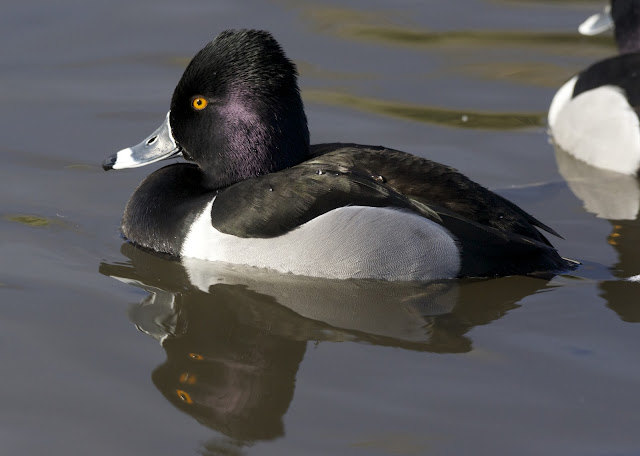The last several posts have featured either the frozen tundra that is Iowa in winter or some of the singular vagrants that have turned up around Phoenix this winter. Given the combination feelings of cold and strange that those themes can bring, it's been nice lately to indulge in some of the warmer, more familiar places and faces around Phoenix.
The Papago Ponds between Phoenix and Tempe host plenty of winterfowl, along with the year's first Swallows. The ponds aren't deep or wide enough to attract Goldeneye and Buffleheads, but for photographing Pintails, Wigeons, Ring-neckes, and even Canvasbacks, there's no place better.
As far as waterfowl goes, these ducks are all pretty plebian. That doesn't mean they're not gorgeous.
I admit, on my weekend birding expeditions now I often skip over the waterfowl if I've seen them before. Time is precious and the winter months bring so many other attractions to in Arizona. Every now and again it is very nice to make a specific point simply of visiting again with these docile and beautiful birds, in no small thanks to the fact that, compared to vagrant Warblers ethereal Kites, they're really accommodating subjects for observation and photography.
Some are still pretty common, like this Blue-gray Gnatcatcher, but are much more fun. These birds are already operating in couple throughout the Papago creosote patches. They don't mind people getting up close and personal, but they don't sit still either, so it's a fair trade.
The short vegetation also provides welcome perches for Northern-rough Wing Swallows. While these Swallows won't win the 'Most Colorful Swallow' award, they do win the punctuality award in Phoenix for being the first Swallows back in town, usually by mid-February.
The Papago mesquites are some of the best places to see these guys perch and preen. The namesake rough out coverts/shoulder on the bird's wings are even somewhat visible here.
As one might expect of such ebullient aviators, they're also prodigious eaters. It's hard for scientists to estimate how many things these acrobatic Swallows kill and eat in their lifetime--far more than any Raptor or Tern--but at least from the small, flying insect perspective, this round fluffy head, with its vacant expression and stubby bill, is neither cute nor endearing, but is in fact the head of a mass murderer..bum...Bum...BUM!








